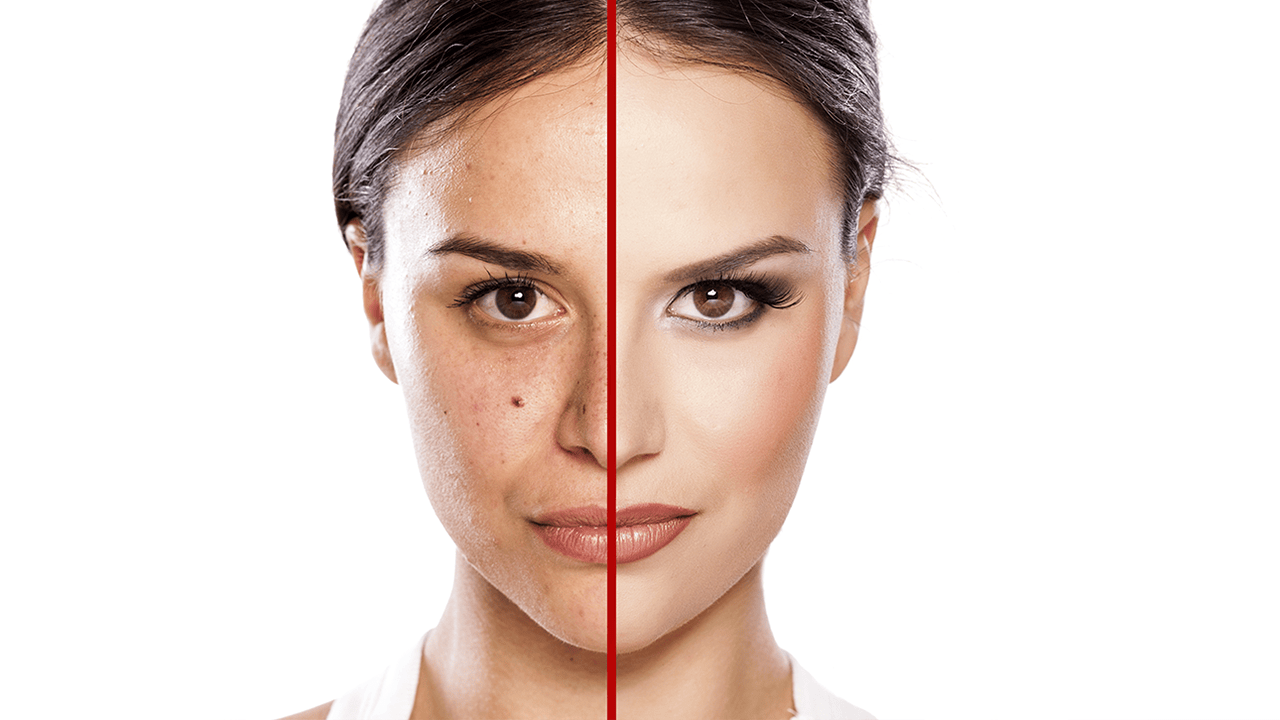Dark spots, pigmentation, and uneven skin tone are common skin concerns. They can appear after sun exposure, acne, or simply with age. The good news? You don’t need to rely only on expensive in-office treatments to see results. With the right at-home peeling products, you can fade discoloration, improve skin texture, and reveal a brighter, clearer complexion.
This guide explains how at-home peels work, their benefits, the best products to try, and how to safely include them in your skincare routine.
In this article:
What Causes Dark Spots and Pigmentation?
How Do At-Home Peeling Treatments Work?
Benefits of At-Home Peeling for Dark Spots
Best At-Home Products for Pigmentation and Dark Spots
How to Use At-Home Peels Safely ?
Common Mistakes to Avoid
FAQs about pigment and dark spots treatments
Final thoughts
What Causes Dark Spots and Pigmentation?
Dark spots form when your skin produces too much melanin (the pigment that gives skin its color). This process can be triggered by:
- Sun exposure : UV rays stimulate excess melanin.
- Post-inflammatory hyperpigmentation : marks left after acne or skin irritation.
- Hormonal changes : such as melasma during pregnancy.
- Aging : natural skin cell turnover slows down over time.
By gently exfoliating the skin and encouraging new cell growth, peels can reduce these spots and restore a more even tone.
How Do At-Home Peeling Treatments Work?
Peeling treatments use exfoliating acids to remove the top layer of dead skin cells. This process speeds up cell renewal, helping to fade spots and smooth texture.
The most common ingredients are:
- AHAs (Alpha Hydroxy Acids) – such as glycolic or lactic acid. They brighten skin and improve surface pigmentation.
- BHAs (Beta Hydroxy Acids) – such as salicylic acid. They go deeper into the pores, helping with acne and post-acne marks.
- Retinoids – encourage cell turnover and collagen production.
Unlike professional chemical peels, at-home versions are gentler but still effective with consistent use.
Benefits of At-Home Peeling for Dark Spots
Adding a peeling treatment to your routine can bring visible improvements:
- Brightens dull skin
- Fades hyperpigmentation and acne marks
- Evens out skin tone
- Smooths rough texture
- Boosts absorption of other skincare products
When used regularly and correctly, these treatments can help your skin look fresher and healthier.
Best At-Home Products for Pigmentation and Dark Spots
Here is a list of our highly recommended at-home peeling products, known for their effectiveness in treating pigment and dark spots:
- Paula’s Choice Skin Perfecting 2% BHA Liquid Exfoliant
A cult favorite, this product uses salicylic acid to unclog pores and gently exfoliate the skin. It’s particularly effective for acne-prone skin that also suffers from dark spots and hyperpigmentation. - The Ordinary AHA 30% + BHA 2% Peeling Solution
This powerful dual exfoliant uses both AHAs and BHAs to promote cell turnover and fade pigment and dark spots. It’s designed for short-term use, so following the instructions carefully is essential. - Drunk Elephant T.L.C. Sukari Babyfacial
A professional-grade at-home peel, this product contains a blend of glycolic, lactic, tartaric, and citric acids to smooth skin texture and reduce the appearance of dark spots. - Alpha-H Liquid Gold
Renowned for its anti-aging properties, this glycolic acid-based peel smooths skin texture and effectively diminishes dark spots along with other pigmentation issues. - Murad Rapid Age Spot and Pigment Lightening Serum
While more of a serum than a traditional peel, its formulation includes hydroquinone alternatives and glycolic acid, making it effective in targeting dark spots and hyperpigmentation. - Neostrata Resurface Foaming Glycolic Wash
This innovative foaming wash combines cleansing with exfoliation, making it an excellent option for those who want to address dark spots while keeping their skincare routine simple. - Pixi Glow Tonic
Enriched with glycolic acid and aloe vera, this toner not only soothes the skin but also works to diminish dark spots and improve skin texture. - Kate Somerville ExfoliKate Intensive Exfoliating Treatment
A powerful yet gentle treatment that effectively removes dead skin cells and brightens the skin by reducing dark spots and uneven pigmentation. - Clinique Clarifying Lotion 2
A two-step system that uses salicylic acid to gently exfoliate and clear dark spots while also preventing future breakouts.
How to Use At-Home Peels Safely
To get the best results while avoiding irritation, follow these steps:
- Prep Your Skin : Cleanse your face and pat dry.
- Do a Patch Test : Apply the product on a small area first.
- Apply Evenly : Use according to the instructions (usually once a week at first).
- Moisturize Well : Hydration is essential after exfoliation.
- Protect with Sunscreen : Sun exposure can make pigmentation worse if skin is unprotected.
⚠️ Never overuse peels. Too much exfoliation can cause redness, peeling, or more dark spots.
Common Mistakes to Avoid
- Using peels too often
- Mixing too many strong actives at once
- Skipping sunscreen
- Not moisturizing enough
- Ignoring irritation signs
Consistency is key. It’s better to go slowly and allow your skin to adapt.
FAQs About Peeling for Dark Spots
Here are 10 common questions about treating pigment and dark spots with at-home peeling treatments, along with expert answers to help guide your skincare journey:
- What are pigment spots and dark spots, and what causes them?
Both pigment spots and dark spots are forms of hyperpigmentation caused by an excess production of melanin. Factors include sun exposure, hormonal changes, acne scars, and aging. - How do at-home peeling products work to fade dark spots?
These products use active ingredients such as AHAs and BHAs to exfoliate dead skin cells, promote cell turnover, and reveal fresher skin. This process helps in reducing the appearance of both pigment and dark spots. - Can at-home peeling treatments really reduce dark spots?
Yes, when used consistently and correctly as part of your daily routine, these treatments can help fade dark spots and even out skin tone over time. - How often should I use a peeling treatment to target dark spots?
It’s best to start with once or twice a week and gradually increase frequency as your skin builds tolerance. Always follow the product’s instructions to avoid over-exfoliation and irritation. - Are these treatments safe for sensitive skin prone to dark spots?
Many peeling products are formulated for sensitive skin. However, always perform a patch test and choose a product with gentle exfoliating properties to ensure that dark spots are treated without adverse reactions. - What should I do if my skin becomes irritated from a peeling treatment?
If irritation occurs, reduce the frequency of use, switch to a milder product, or consult a dermatologist. Always follow up with a soothing moisturizer to help calm dark spot-prone skin. - Can I use these peeling treatments alongside other skincare products?
Yes, but avoid using multiple exfoliating products simultaneously. Use your peeling treatment as directed, then layer other products like serums and moisturizers afterward to support dark spot reduction. - Is sunscreen necessary when using peeling treatments for dark spots?
Absolutely! Sunscreen is essential because peeling treatments can make your skin more sensitive to UV rays, which can worsen dark spots. Always apply a broad-spectrum sunscreen with at least SPF 30 during the day. - How long will it take to see improvements in dark spots?
Visible results may take several weeks to months, depending on your skin type and the severity of your dark spots. Consistency and patience are key to successful treatment. - Are at-home peeling treatments as effective as professional treatments for dark spots?
While professional treatments can sometimes offer quicker results, many at-home peeling products contain powerful ingredients that deliver impressive improvements. When used correctly, they can achieve results comparable to professional procedures.
Final thoughts
At-home peeling treatments are a powerful way to reduce dark spots and pigmentation without visiting a clinic. By choosing the right peel, using it safely, and protecting your skin from the sun, you can gradually achieve a smoother, more radiant, and even complexion.
What to read next


